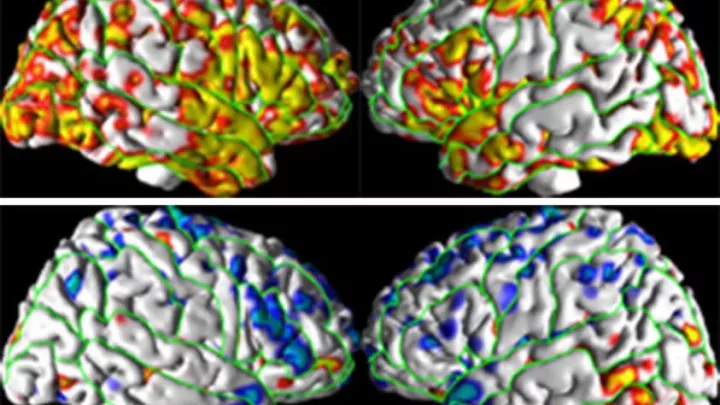
Common Psychiatric Disorders Share an Overlapping Genetic Risk
Investigators found that many common psychiatric disorders are deeply connected on a genetic level, sharing specific genetic risk factors, underscoring the need to recognize shared dimensions of brain dysfunction, and develop new treatment strategies. Results of this investigation have been published in the June 22, 2018 issue of the journal, Science.
Classification of brain disorders has evolved over the last century. Researchers in the current global study — named the Brainstorm Project — used recently developed methods of heritability analysis to accurately measure the correlation of common genetic variation across neurological and psychiatric disorders, and behavioral-cognitive traits. The results demonstrate substantial overlaps in genetic risk for psychiatric disorders, but not neurological disorders.

"Refining the classification of psychiatric disorders, which affect 1 in 6 adults, by relating the dimensions of disrupted function to their genetic underpinnings will be important for improving treatments," said Pat Levitt, PhD, the Simms/Mann Chair in Developmental Neurogenetics, incoming Chief Scientific Officer and Director of The Saban Research Institute of Children’s Hospital Los Angeles.
Levitt is among the authors of the Brainstorm paper, titled, "Analysis of Shared Heritability in Common Disorders of the Brain," which involved investigators from across the U.S., the United Kingdom, Australia and Asia.
The researchers quantified the degree of overlap for genetic risk factors of 25 common brain disorders — more than had been studied previously — based on genome-wide association of common genetic variation for 215,683 patients and 657,164 controls, as well as 17 dimensions of brain function – the observable characteristics (called phenotypes) – from nearly 1.2 million individuals.
The study found that certain psychiatric disorders shared a similar genetic foundation, with the strongest links between ADHD, bipolar disorder, major depressive disorder (MDD) and schizophrenia. Some disorders — such as MDD and anxiety disorders — had significant correlations, which could suggest related genetic risk for expressing the disorder, researchers said.
In contrast, they found limited evidence for common genetic risk factors among neurological disorders, suggesting greater diagnostic specificity and likely dissimilar origins. Instead, neurological disorders appear more distinct from one another and from psychiatric disorders, except for migraine, which significantly correlated to ADHD, MDD and Tourette Syndrome. Of the neurological disorders, Parkinson's disease, Alzheimer's disease, epilepsy and multiple sclerosis, in particular, showed little or no correlation with each other and with other brain disorders.
The study also looked at the role of certain behavioral-cognitive functional dimensions. Of great interest was that the results suggest a link between cognitive performance in early life and genetic risk for both psychiatric and neurological brain disorders.
Researchers on the Brainstorm Project said that the high degree of genetic correlation among psychiatric disorders adds further evidence that current clinical boundaries don't reflect accurately the heritable nature of underlying disease processes.
"We need studies that determine the factors influencing the way in which shared genetic risk for different psychiatric disorders can lead to disruption of different brain functions. One possibility is that different environmental contributions during development interact with shared genetic risk that result in specific diagnoses," said Levitt, who is also the WM Keck Provost Professor in Neurogenetics at the Keck School of Medicine of USC.
The study was supported in part by grants 1RO1MH10764901 and 5U01MH09443203 and the Orion Farmos Research Foundation, the Fannie and John Hertz Foundation and the Simms/Mann Institute.
About Children's Hospital Los Angeles
Children’s Hospital Los Angeles is at the forefront of pediatric medicine, offering acclaimed care to children from across the world, the country and the greater Southern California region. Founded in 1901, Children’s Hospital Los Angeles is the largest provider of care for children in Los Angeles County, the No. 1 pediatric hospital in California and the Pacific region, and is consistently ranked in the top 10 in the nation on U.S. News & World Report’s Honor Roll of Best Children’s Hospitals. Clinical expertise spans the pediatric care continuum for newborns to young adults, from everyday preventive medicine to the most medically complex cases. Inclusive, compassionate, child- and family-friendly clinical care is led by physicians who are faculty members of the Keck School of Medicine of USC. Physicians translate the new discoveries, treatments and cures proven through the work of scientists in The Saban Research Institute of Children’s Hospital Los Angeles—among the top 10 children’s hospitals for National Institutes of Health funding—to bring answers to families faster. The hospital also is home to one of the largest training programs for pediatricians in the United States. To learn more, follow us on Facebook, Instagram, LinkedIn, YouTube and Twitter, and visit our blog at CHLA.org/blog.
Media Contact: Ellin Kavanagh,
ekavanagh@chla.usc.edu,
323-361-8505


